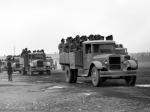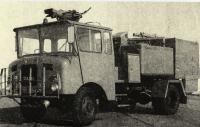AMO » 3
Reconstruction of the factory, carried out in 1929-1931, was aimed at starting the mass production of the Autocar truck instead of AMO F-15. Fully assembled from domestic parts, the new model received the name AMO 3. Its production began on 20th October, 1931.
The first manufactured copy of the AMO-3 was presented to the newspaper 'Pravda'. The remaining trucks from the first industrial batch were handed over to the Proletarsky District Communist Party of the Soviet Union of Moscow, the Supreme Economic Council, the All-Russian Central Council of Trade Unions and Moscow Dinamo and Sickle and Molot plants.
AMO 3 had a number of differences in comparison to the American truck. For example, the rear axle case was updated to increase the ground clearance under the driving axle to 260 mm. New stamping presses influenced the shape of the front fenders, which have become more sophisticated and beautiful. The outdated magneto was replaced with a battery ignition. AMO 3 also got a new type of mounting the headlights: they began to be installed on a single transverse crossbar located between the front wings.
A great achievement of the Russian factory was production of a six-cylinder inline engine based on the American Hercules WXB engine which was used on Autocar (AMO 2). In this case, all the dimensions of the engine had to be converted from inches to millimeters.
In 1931, the first AMO 3 trucks went to a trip between Moscow and Leningrad, the results of which were called brilliant in the press. In 1933, four AMO 3 trucks took part in the All-Union test run, better known as the Karakum motor rally, and proved to be perfect. A total of 33,719 AMO 3 trucks were made.












